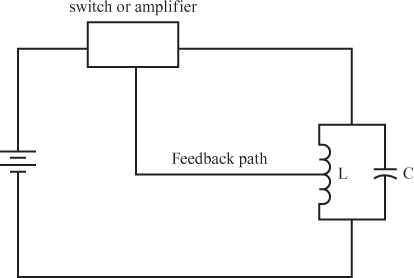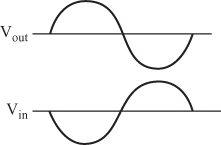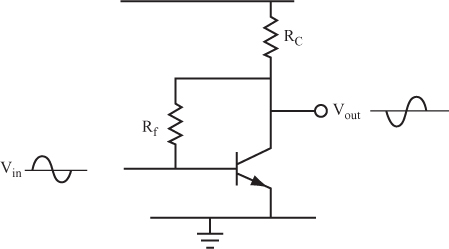Understanding Oscillators
1 An oscillator can be divided into three definite sections:
- An amplifier
- The feedback connections
- The components that set frequency
The amplifier replaces the switch in the basic oscillator circuit, introduced in problem 35 of Chapter 7 (Figure 7.46).
Question
Draw an oscillator circuit, and label the parts. Use a separate sheet of paper for your drawing.
2 When you connect the output of an amplifier to its input, you get feedback. If the feedback is “out of phase” with the input, as shown in Figure 9.2, then the feedback is negative.
When the signal from the collector is fed back to the base of the transistor through a feedback resistor (Rf), as in the circuit shown in Figure 9.3, the feedback signal is out of phase with the input signal. Therefore, the feedback is negative.
Negative feedback is used to stabilize the operation of an amplifier by doing the following:
- Preventing the DC bias point and gain of an amplifier from being affected by changes in temperature
- Reducing distortion in amplifiers, thereby improving the quality of the sound
Get Complete Electronics Self-Teaching Guide with Projects now with the O’Reilly learning platform.
O’Reilly members experience books, live events, courses curated by job role, and more from O’Reilly and nearly 200 top publishers.




